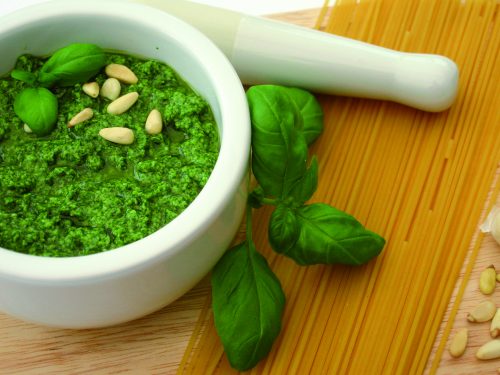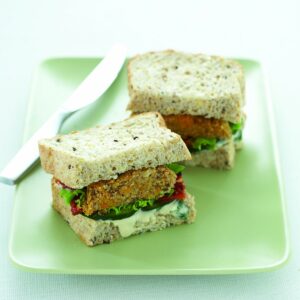
We guide you through the growing range of pesto products on the shelves to help you choose the right pesto for you.
Pesto originally comes from Genoa, Italy. Traditionally, a true pesto is made from basil leaves, pine nuts, garlic, parmesan cheese and olive oil, pounded together to make a paste.
Modern pesto has many variations. Ingredients like sun-dried tomato, red pepper, herbs like parsley or coriander and all sorts of nuts may be used.
Once opened, pesto will keep for around a week. To make it last, freeze in ice cube containers.
Fat
Since its main ingredients are oil, nuts and cheese, it’s easy to see that pesto will be high in fat. Most products in our sample had a fat content of 40-50%, although the less traditional capsicum pestos were considerably lower.
This is not necessarily bad news. It’s important to consider how the product is used. Pesto typically has a strong flavour. If used as an ingredient to add flavour, you’ll only need a small amount. This may have little effect on the total fat content of the finished dish.
On the other hand, if you plan to put the whole container out as a dip with crackers, the fat content becomes a concern.
In our sample the saturated fat ranged from 1.1-8.5g per 100g. Saturated fat is considered a ‘bad’ fat and too much in your diet can lead to high cholesterol levels. If you’re using anything but the smallest amounts of pesto, you need to be wary of the saturated fat content: as a guide look for ones with less than 5g per 100g.
Energy
A high fat food is likely to be a high energy food as well, but of course that depends on how much you’re using.
At the lower energy end of the scale a tablespoon of Delmaine roast capsicum pesto provides 120kJ, but one tablespoon of La Bonne Cuisine basil and roast garlic pesto provides 430kJ (the same as a small banana – that can soon add up if you’re not careful!).
Salt
We’re all encouraged to reduce the salt (sodium chloride) in our diets, and this is especially important for anyone with high blood pressure. A tablespoon of pesto averages around 18g, which will provide between 31mg sodium (Delmaine) and 88mg sodium (Naked Organics).
That’s not going to break the bank when we’re advised to limit intake to 1600mg a day. But if you’re using it as a dip, aim for the lower sodium products and avoid serving them with other salty foods such as chips or salted crackers.
The bottom line
Pesto is a very versatile ingredient to have in your fridge. When used as a flavour enhancer you only need small amounts, so the fat and salt content shouldn’t have much of an impact on the overall nutritional balance of your meal. But take care if using pesto as a dip; it is a high-fat choice.
www.healthyfood.com










